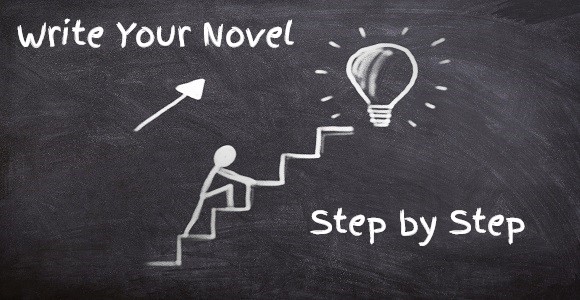
The Four Stages of Writing a Novel
Writers often begin the story development process by thinking about what their story needs: a main character/protagonist/hero, a solid theme, a riveting plot and, of course, to meet all the touch points of their genre.
Because this is just the beginning of the process, they usually don’t have much of that worked out yet. And so, they are faced with the daunting task of figuring out their story’s world, who’s in it, what happens to them, and what it all means before they even write a word. This can throw a writer into creative gridlock right out of the gate and can get so frustrating that the Muse completely deserts them.
Fortunately, there’s a better way. Rather than asking what the story needs, we can turn it around and ask what the author needs. What is the most comfortable sequence of activities that will lead a writer from concept to completion of their novel or screenplay?
As varied a lot as we writers are, there are certain fundamental phases we all go through when coming to our stories. In fact, we can arrange the entire creative process into four distinct stages:
- Inspiration
- Development
- Exposition
- Storytelling
The Inspiration Stage begins the moment we have an idea for a story. This might be an overall concept (computer geeks are transported to the old west), a plot twist (a detective discovers he is investigating his own murder), a character situation (Ponce de Leon still lives today), a thematic topic (fracking), a character study (an aging rock star who is losing his licks) a line of dialog (“Just cuz somthin’s free don’t mean you didn’t buy it.”), a title (Too Old To Die Young) or any other creative notion that makes you think, that’s a good idea for a story!
What gets the hair on your writerly tail to stand up isn’t important. Whatever it is, you are in the Inspiration Stage and it lasts as long as new ideas flow like spring runoff. You might add characters, specific events in your plot or even write a chapter or two. A very lucky writer never gets out of this stage and just keeps on going until the novel is completely written and sent out for publication.
Alas, for most of us, the Muse vanishes somewhere along the line, and we find ourselves staring at the all-too-familiar blank page wondering where to go from here. Where we go is to Stage Two: Development.
In the Development Stage we stand back and take a long critical look at our story so far. We now have quite a few ideas and there are likely sections that are ready to write, or perhaps you’ve already written some. But there may be other areas that are a bit lean or even downright sketchy, hanging by only the thinnest of story threads.
What’s needed now is to grow each of those ideas to add more substance. So, story point by story point we add richness and detail until every notion we generated in Inspiration has become a fully developed concept. What’s there looks good, but what about what isn’t there?
Even though each idea is now fully formed, in between them may be story holes, both small and gaping, and breaks in logic when what happens first makes no sense in connection to what happens later. Then there might be characters that don’t ring true, unresolved conflicts, and expressed emotions that seem to come out of nowhere.
And so, the work begins – filling the space between your ideas and trying to make them all fit in the same story. By the end of the development stage, you’ll have added detail and richness to your story and added all the pieces needed to fill the gaps.
Eventually (thank Providence) you’ll have fully developed your ideas and plugged all the leaks. But what you have now is more like a box of snarled threads than a fabric. The pieces are all there but they aren’t yet working together. You realize you need to integrate your individual ideas so they can work in concert. You also realize you have quite unawares stumbled into Stage Three: Exposition.
Exposition isn’t just about revealing story points to your readers or audience. It is even more about pulling all of those threads together so they become a yarn.
Here you will consider how one story point affects another, and how plot impacts character impacts theme impacts genre. Stories are holistic, and every piece should inform all the rest and, conversely, be informed by all the rest. In this way, your story becomes organic and transcends the pieces from which it is made.
And when you have all that figured out, you are ready to begin the final stage: Storytelling.
Storytelling is more than word play and style. It is also about deciding how to weave the threads of your story as it unfolds. Scene by scene or chapter by chapter you’ll lay out the arcs of your characters and their relationships with one another, you’ll carry your plot through twists and turns, you’ll subtly build your theme into a powerful message, and you’ll grow your genre into a unique reader or audience experience.
And lastly, before we send our creation out into the world, we writers shift and substitute and polish until (almost regretfully) we let it go, just like a parent bundling up a child for the first day of school. StoryWeaver can’t help you find the resolve to write “The End,” but as Da Vinci is credited with saying, “Art is never finished, only abandoned.”
Step 3 of Write Your Novel Step By Step will be coming next week but you can keep going right now with the interactive online StoryWeaver App. Check out the 14 day free trial at Storymind.com/free-trial.htm

